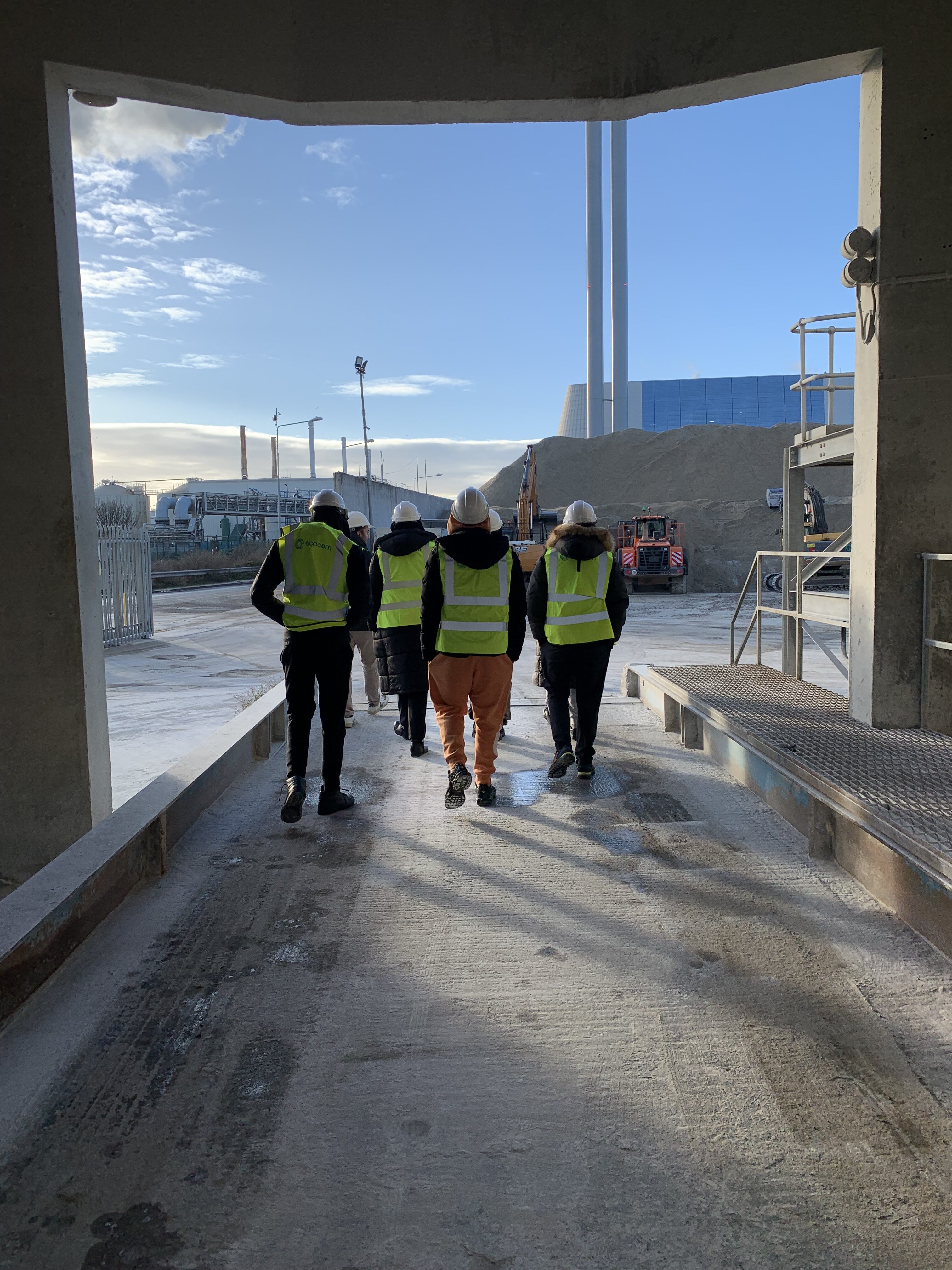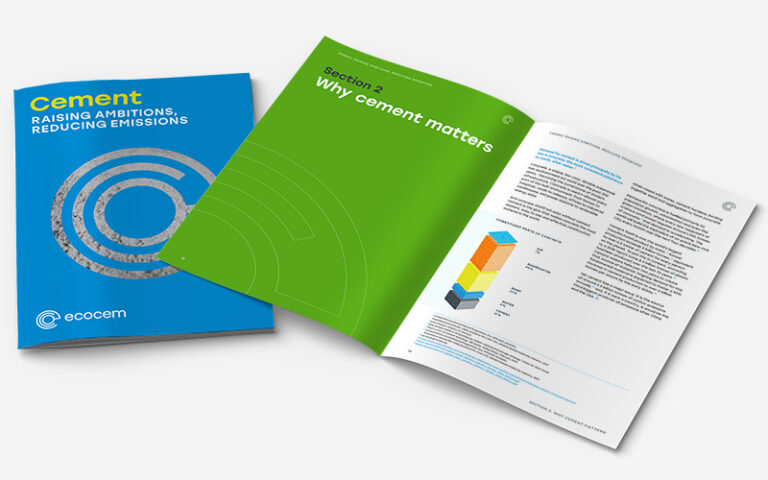
While clinker makes less than 15% of the total mass of concrete, it is responsible for over 90% of the carbon footprint of concrete. For every tonne of clinker produced, nearly a tonne of CO2 is emitted. Clinker is made when limestone and clays are heated together in a kiln at 1,450oC. Only one third of the CO2 emitted comes from the energy to heat the kiln and other energy intensive processes. In other words, even if clinker was produced using entirely green energy, the carbon footprint of clinker would only reduce by one third.
The remaining two thirds comes from the chemical reaction when the limestone breaks down inside the kiln from CaCO3 to CaO (quicklime) and CO2. These are known as process emissions.
Carbon capture technology is widely promoted as the solution to process emissions. While it will have a role to play in the future, this technology is as yet unproven at scale and is unlikely to make a significant impact in the global cement industry before 2040. It will require dedicated infrastructure, enormous investment, and substantially increase the energy demand of cement manufacture. It cannot align the industry with a 1.5°C warming target.
If we are to achieve deep and rapid decarbonisation in the cement and concrete industries in the short term, major reductions in the amount of clinker used in cement are essential. Subtract the pollution. Add the solution.
We have developed and delivered 20 million tonnes of low carbon cement in a range of formulations, preventing further release of 16 million tonnes of CO2 emissions to the atmosphere. How? By using low carbon alternatives, which allow the amount of clinker – the key source of CO2 emissions in cement – to be reduced significantly. Our products emit just a fraction of CO2 per tonne, compared with traditional cement.
The biggest obstacle to the rapid decarbonisation of the cement industry has been scalability of low carbon cements. The materials used historically to produce them are relatively scarce. We have overcome this obstacle by accelerating the development of breakthrough, scalable technologies and products that can deliver a transformation in the decarbonisation of the cement industry.
Partial or full substitution of traditional cement with scalable cementitious alternatives is the most cost-efficient way of decarbonising the cement industry. It can use existing facilities and the raw materials already widely available across the industry today.
And our focus has paid off.
Our new ultra-low carbon cement has a carbon footprint of only 80kg CO2/t, the lowest carbon cement ever used in Europe within major projects, reducing the CO2 footprint of cement by over a factor of eight. Our mission now is to get these low carbon cements to scale in a way that has never been achieved. The results are convincing. And we’re excited about what we’ve developed.
The world needs cement. From housing, sanitation, and places of education and health to roads, flood defences and sustainable energy sources, cement is the glue that holds it all together.
Both human life on earth and economic growth depend on it. But to build a sustainable future, we need to face up to the problem of cement clinker. Made by heating limestone and clays together in a kiln, clinker has traditionally been cement’s major ingredient and the source of its CO2 emissions. For every tonne of cement clinker produced, almost a tonne of CO2 is also emitted. This isn’t sustainable.
Ecocem is on a mission to tackle this by bringing low carbon cements to the world. Our twenty-year commitment to research and development has already delivered innovative, low carbon cements for major infrastructure projects, including Le Grand, Paris, the Aviva Stadium, Dublin, and also the UK’s high-speed railway HS2. We have already avoided 15m tonnes of CO2 entering the atmosphere – equivalent to taking nearly 3.3m cars off the road for a year. To date our products have been limited by availability of suitable raw materials and by our production capability.
Thanks to a step-change innovation at Ecocem, low clinker cement technology, and the deep and rapid decarbonisation of the global cement industry, is now a possibility. Read more about Ecocem’s ACT technology here.

Commissioned by Ecocem, this report provides an updated picture of the challenges and opportunities facing the cement industry as it urgently seeks to reduce its CO2 emissions.
The report also highlights the need for collaboration and innovation to achieve global decarbonization of the industry, both rapidly and at scale.